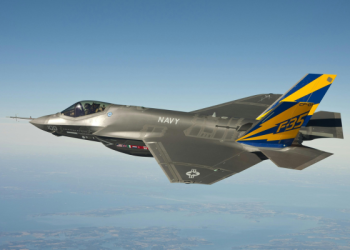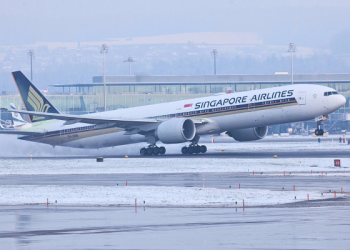Boeing, the American aerospace firm, has issued a robust prediction for China’s aviation industry, estimating a demand for more than 8,000 new aircraft over the next two decades. This projection is in response to the anticipated growth in China’s aviation sector, driven by factors such as economic expansion, domestic travel demand, and the need for fleet renewal.
Significant contribution to global demand
Boeing’s forecast suggests that China’s demand for new commercial aircraft will represent a substantial portion of global deliveries, accounting for approximately 20 percent through the year 2042. As the country’s economy continues to flourish and the appetite for air travel within China grows, Boeing expects the Chinese carrier fleet to expand to nearly 9,600 aircraft.
Darren Hulst, Boeing’s Vice President of Commercial Marketing, noted, “Domestic air traffic in China has already surpassed pre-pandemic levels, and international traffic is recovering steadily. As China’s economy and traffic continue to grow, Boeing’s complete line-up of commercial jets will play a key role in helping meet that growth sustainably and economically.”
Parallels with airbus projection
Boeing’s outlook for China aligns with predictions made earlier by European aircraft manufacturer Airbus, which estimated that China would constitute 23 percent of the global demand for aircraft over the next two decades. Airbus anticipated that China could acquire as many as 9,440 additional aircraft during this period.
Aircraft breakdown
Breaking down Boeing’s analysis, the majority of the 8,560 new aircraft expected in China will be single-aisle narrowbodies, totalling 6,470 units. Additionally, there will be a requirement for 1,550 widebody aircraft. A smaller number of regional jets (350) and freighters (190) are also part of the projection.
Two-thirds of these new planes are earmarked for the expansion initiatives of Chinese airlines, while the remaining third will replace older aircraft, contributing to the reduction of carbon emissions in the country’s aviation sector.
Employment opportunities and economic impact
The influx of new aircraft is expected to create a substantial number of employment opportunities. Boeing estimates that this surge in aircraft demand will necessitate over 400,000 aviation personnel, including 134,000 pilots, 138,000 technicians, and 161,000 cabin crew members. Moreover, the maintenance and servicing requirements of the new aircraft alone are projected to generate a demand of $675 billion in aviation services.
Boeing 737 MAX deliveries in focus
Boeing’s forecast for China comes at a time when the company is poised to resume deliveries of its 737 MAX aircraft in the country after a four-year hiatus. China Southern Airlines was the first to reinstate MAX services earlier this year following the lifting of the aircraft ban in China. It is expected that China Southern Airlines will be among the initial recipients of the new 737 MAX aircraft in China. Boeing’s forecast largely depends on the continued success of the 737 MAX in the country.
Read more on Boeing donates $500,000 to assist Maui wildfire relief





![An Airbus A320neo takes off for its first test flight [File AP]](https://autojournal.africa/wp-content/uploads/2025/12/An-Airbus-A320neo-takes-off-for-its-first-test-flight-File-AP-350x250.png)

![regional air travel in UK [Source Manufacturing Outlook]](https://autojournal.africa/wp-content/uploads/2025/11/regional-air-travel-in-UK-Source-Manufacturing-Outlook-350x250.png)
![Blue Island airlines [Source The Independent]](https://autojournal.africa/wp-content/uploads/2025/11/Blue-Island-airlines-Source-The-Independent-350x250.png)

![Air crashes in 2025 [source The New York Times]](https://autojournal.africa/wp-content/uploads/2025/11/air-crashes-in-2025-source-The-New-York-Times-350x250.png)










